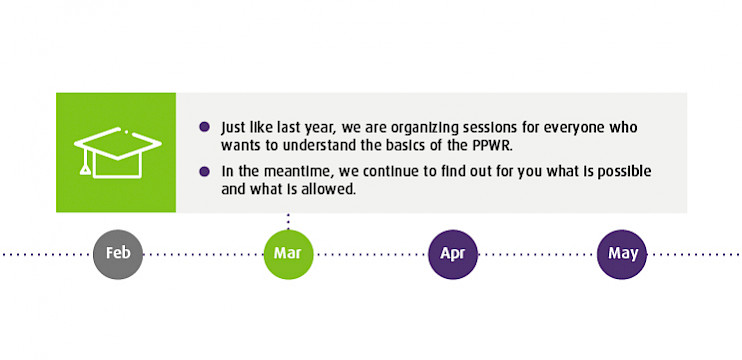How can we help?
Our experts are there for you.
The 3 Pillars of Circular Packaging: What We Can, What We May, What We Want
The first step has been taken. January is behind us, and it's time to dive deeper. Last month, we reflected on a year full of insights and promised to build on that knowledge this year.
The PPWR is increasingly being discussed, and we see plenty of debates about its impact. Some elements are praised, while others are quickly labeled as ‘nonsensical.’ In our previous post, we promised to bring clarity to this complex matter. That’s why we want to start by mapping out the playing field thoroughly. The first measures won’t take effect until August 12, 2026, so we still have some time ????
During a conference in Utrecht last year, Ronald Korstanje, Program Director of the Circular Plastic Initiative, summarized the playing field remarkably well:
*"Circularity only works when three elements successfully come together. These three elements are:
These three pillars form the foundation of a circular solution. They show that a successful transition is always a layered solution: only when all parts align can packaging truly become circular. This leads to a paradoxical insight: we cannot do it alone, but we also cannot leave it entirely to others. Each pillar is crucial, so the solution lies both within ourselves and in collaboration.

What We Can – Technical Feasibility
This pillar revolves around technological advancements. What options do suppliers offer for packaging, such as jars or bottles? Consider:
The recycling industry also plays a key role: how effectively can materials be sorted and processed? What percentage of packaging can realistically be reused? Technology forms the foundation, but it’s only one piece of the puzzle.
What We May – Regulatory Framework
Just because something is technically possible doesn’t mean it’s allowed. Regulations define the boundaries within which the industry, producers, and consumers must operate. This is a relatively new playing field, with the PPWR and related legislation becoming increasingly directive.
In practice, regulations and reality don’t always align. This can lead to frustrations and even severe consequences. The challenge is to create clarity in rule interpretation and help businesses navigate them effectively.
What We Want – Acceptance and Behavior
Ultimately, the willingness of both producers and consumers to embrace change plays a major role. Even if technology and regulations are in place, the transition will stagnate without support. Some critical questions:
Good intentions don’t automatically translate into economic success. That’s why behavioral change is a decisive factor in the circular transition.
Moving Towards Structural Solutions
In this complex landscape, we strive to create clarity. We seek pathways that encompass the entire supply chain and ultimately lead to circular packaging that consumers actually choose. Because that is the goal: fewer packages, less waste, and optimal material reuse.
Next month, we’ll zoom in on “What We Can.” Do you have ideas, practical experience, or questions about this? We’d love to hear them. Join the discussion—because, as mentioned, we can’t do this alone!
Our experts are there for you.